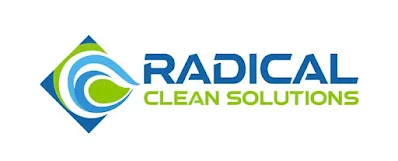According to a report, it is now possible to "cleanse" an indoor environment of all pathogens and odors, both from the air we breathe and from all surfaces we come into contact with up to an acknowledged and proven pathogen reduction of 99.9999 percent, using just one system, Radical Clean Solutions International's RCS system.
According to a press release issued by RCS International and signed by Stuart Elson, Head of Global Development, and sent to the Daily Independent, RCS has duplicated this atmospheric occurrence so that the natural cleaning power of the hydroxyl radical outdoors may now be felt and used indoors.
The press statement states in part, "Today we face the threat, both to our health and the disruption of our life by Sars Cov-2 (Covid); Tomorrow there may possibly be a new virus that we know nothing about...and how have we gotten rid of these threats or prepared for ones to come...?" No, we have not been able to.
If the past two years have taught us anything, it is how much more conscious we are of our immediate surroundings and how important genuinely safe spaces are now. However, RCS's decision to deploy the Hydroxyl Radical Generator systems was not influenced by Covid or lockdowns; for that, we must go back in time, it was added.
NASA first learned about the impact of atmospheric Hydroxyl Radicals in the 1960s, a study by Leeds University in the UK in the 1970s showed it was the Hydroxyl Radical—not ozone—that cleared our atmosphere of the danger from pathogens and toxic gases, and in 1995 The Intergovernmental Panel Conference on Climate Change made this fact publicly known for the first time.
Elson said that when UV light from the sun strikes water vapor in the atmosphere, a Hydroxyl Radical is generated. When these two elements come together, a reaction occurs that transforms water vapor (H2O) into OH or HO. This OH binds to microorganisms and destroys them, neutralizing any hazard in the environment and on any surface. The Head of Global Development continued, "RCS has duplicated this atmospheric phenomenon so that today, the natural cleansing force of the Hydroxyl Radical outdoors may be experienced and work indoors."
How does it work?
It works by imitating the production of hydroxyl radicals in nature. Each of our models draws air into the device, where it enters a reaction chamber containing a number of cutting-edge optics light sources. The moisture inside the chamber is converted to OH, and the resulting OH (the Hydroxyl Radical) is released outside the unit, creating a concentration of 2.6 billion Hydroxyl Radicals per cubic centimeter, the same as what is found naturally (cm3).
What makes this solution so effective?
In order to respond to that, let's take a look at some of the alternatives that have been in use for years despite the fact that we know they have little effect and only persist because there are no better options available. Einstein might have compared this strategy to "insanity" because it involves using the same methods over and over again while hoping for a different result.
Hydrogen peroxide (Bleach) is hazardous to handle and expensive to keep properly; it needs to be diluted and administered by qualified professionals; when used in this way, it is far less effective. All of those chemicals eventually wash back into the soil or the ocean when they are washed away. To be used in industrial settings, a room must be empty.
Direct UV radiation - UV requires 14 seconds of continuous contact to reduce a pathogen by 90% (Log 1) and have any detectable effect, but this method is ineffective since air circulates. UV also functions in a "line of sight" manner; anything that blocks the light beam creates a shadow, which leaves anything outside of it unclean or unaffected. The further the target is from the original light source, the less effective the light is. cannot be utilized when guests are present.
By definition, a "filter" works to prevent a substance from passing through rather than to completely remove it. Filters clog up very easily, thus decreasing their efficacy. The most sophisticated filters are HEPA filters, which are typically found in air conditioning systems outside of buildings.
According to the statement, standard HEPA filters can only block particles that are 3 microns in size (3000 nanometers), while more advanced ones can block particles as small as 0.3 microns (300 nanometers). As a result, by definition, they cannot block elements like viruses or bacteria, nor can they stop the growth of mold or fungus inside buildings, or remove offensive odors.
The RCS Hydroxyl Radical Generator line is completely safe for people, pets, and plants; you can carry on working nearby. As a result, continued use of the RCS Hydroxyl Radical Generator range increases an establishment's productivity.
Consider any indoor area that needs to be "cleaned" after regular use before it can be utilized again. It's vital to leave the space, clean it, wait, and then come back in. This idle time may last for several hours. One action might easily lead to the next if the RCS Hydroxyl Radical Generator were located there, allowing for more work to be completed in the same amount of time. Increased productivity, safer working conditions, better outcomes, and improved environmental conditions are among the advantages that address both commercial and health concerns, he stated in the news statement.




